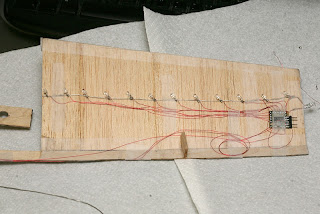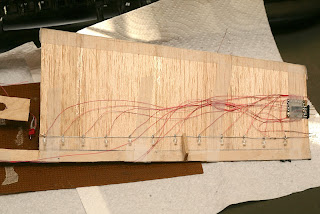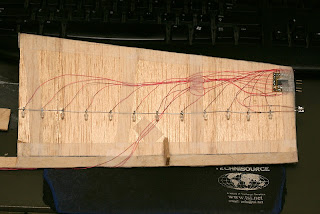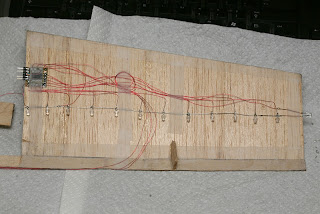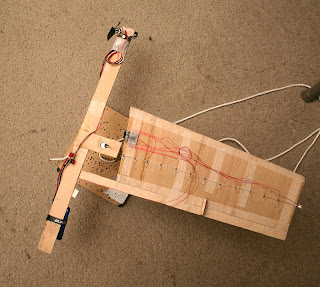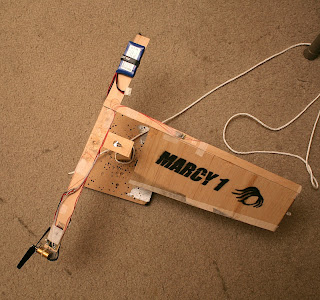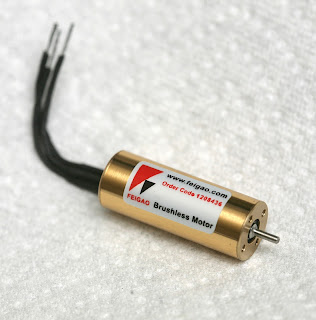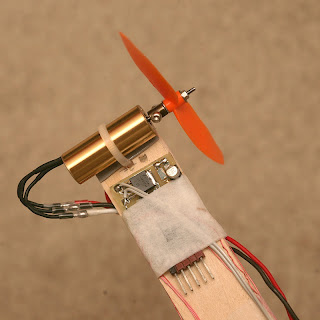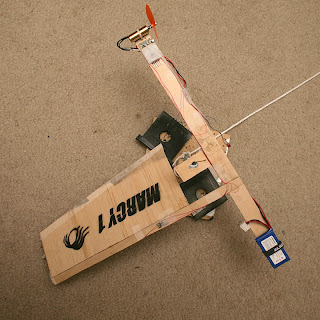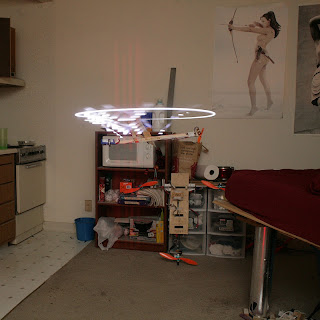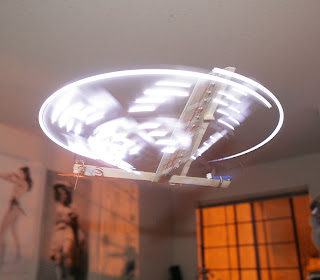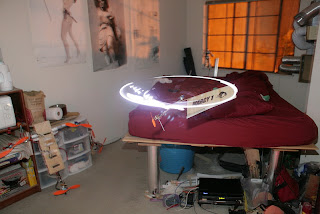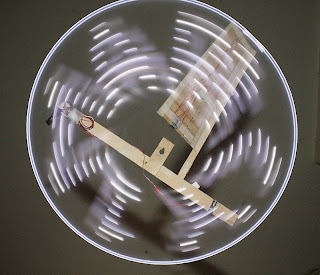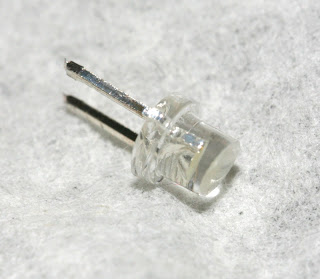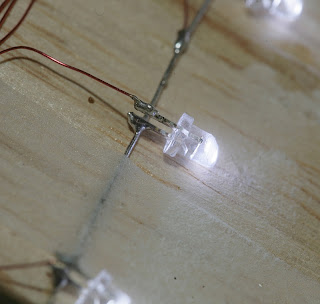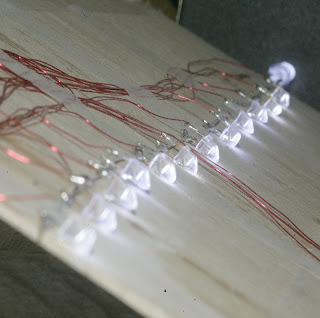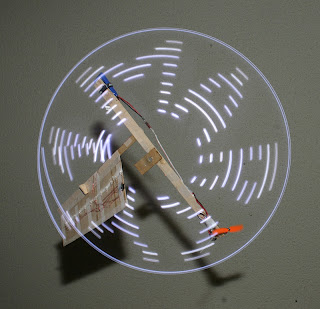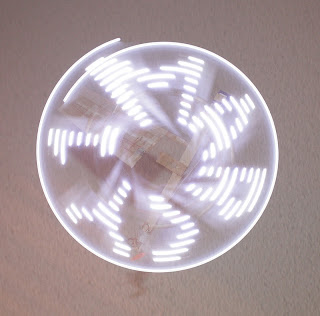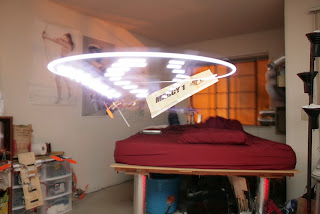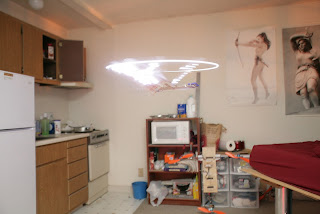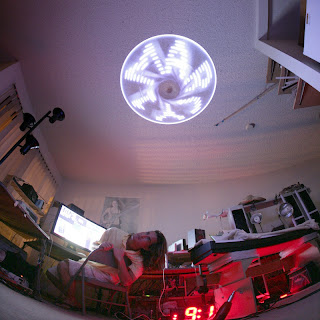Armed with a remote-controlled helicopter nicknamed the "scientific predator", CSIRO scientists are circumnavigating Australia, documenting the tonnes of litter left or washed up on the nation's beaches and calculating the impact on marine life.
Read more: http://www.news.com.au/technology/eye-in-sky-filming-our-rubbish-shame/story-e6frfro0-1226280052411#ixzz1nJTfV0mf
All Posts (14048)
Much better looking than the last tethered attempt, like the idea of a big coaxial pair in the centre to do the lifting. I knew a girl like that.
The HoverMast responds to the need for quick, mobile intelligence gathering. At the click of a button, the system autonomously deploys, rising to heights of up to 50 meters within 10-15 seconds. Secured by a cable, serving as a power supply and wideband data link, the highly stabilized HoverMast combines advanced flight algorithms and innovative materials to provide the highest payload-to-size ratio available today. Weighing only 10 kg, the platform is capable of hosting 9 kg payloads, such as electro-optic sensors, laser designators, radar, and sophisticated COMINT and ELINT systems. Its data link enables the transfer of critical data to selected recipients in real time.
Slashdot linked to this article on a Bixler in Sumatra that appears to be equipped with an Ardupilot, based on the mission planner in use on their laptop.

Here is more info about new capacitor tech discussed in other blog. Murata has introduced lately interesting technology regarding lightweight energy storing- the super capacitors. The 5.5V double cell capacitors features a thin 20.5mm X 18.5mm X 3.0mm package and a 350mF value. Any applications in mind?At least the energy/weight ration should be interesting to flying electronics.Also one aspect is fast changing.
From Robots.net:
This image is not cgi or a miniature; it is a real mountain slope where artist Sonja Hinrichsen created this beautiful pattern simply by walking in circles. The robotic perspective of this concept is the way the photos and the video were shot, not by a helicopter but by a small (but quite expensive) octocopter by video production company steamboat aerials. The Cinestar8 costs around 10k $ but it can carry the ~400gr camera while being stable enough to produce this result. The video is similar to that of a hugely expensive helicopter shot or even better considering the lack of downwash a helicopter creates. This video is already very popular but almost no-one cares how it was shot, most people focus on the art-concept (reasonably so), maybe drone filming is starting to become quite mainstream. You can enjoy the full scale of it at this video on vimeo and you can find high-resolution aerial images here.
CANADA IS NUMBER ONE IN NORTH AMERICA!

Figure 12-2 Work Plan
Well folks after some browsing I've discovered that Canada is the current leader in terms of regulations of commercial use UAVs in North America. Whereas the US President has just recently signed a bill to get the FAA to create detailed regulations for commercial use of UAVs, Canada has been working on them since 2008.
Here's a Work Plan extracted from the final report of the UAV Working Group, from the Transport Canada website:
12.2 Work Plan for Complete and Safe Integration into Canadian Airspace: 2012
The Working Group proposes the following Work Plan to achieve complete and safe integration of UAVs into Canadian airspace by the year 2012. The Working Group believes there is an immediate need for the creation of a UAV SFOC Review Working Group. All other Working Groups that are referenced in this Work Plan would be part of a longer-term process to achieve routine operations of UAVs in Canadian airspace.
WORK PLAN
2007:
- Submit Unmanned Air Vehicle Working Group Final Report to Transport Canada Senior management; and
- Approval and creation of a UAV SFOC Review Working Group.
2008:
- Implement registration of UAVs;
- Revise Staff Instructions in accordance with UAV SFOC Review Working Group recommendations and implement additional recommendations (advisory material etc.);
- Have procedures/exemption(s) in place for UAVs operating inside buildings and underground;
- Continue the development of Industry Groups to represent the Canadian UAV Industry to Transport Canada;
- Initiate collaborative effort toward Design Standards; and
- Allocation of dedicated Transport Canada resources.
2009:
- Develop or adopt Airworthiness Design Standards for UAVs with a MTOW not exceeding 150 Kg;
- Creation of a Working Group to deal with UAS-specific components; and
- Create Notices of Proposed Amendments (NPAs) for presentation at CARAC Technical Committee Meetings:
- January 1st – December 30th:
- General Operating and Flight Rules;
- Pilot/Maintainer Qualifications and Training; and
- Maintenance and Flight Authorities.
2010:
- Create NPAs for presentation at CARAC Technical Committee Meetings:
- Completed by December 30th:
- Airworthiness Certification;
- Operating Certificates (new Working Group); and
- New operating rules (e.g., IFR approaches etc.).
- Development of Advisory material / Exemptions - after approval of NPAs
2012:
- Completion – safe airspace integration.
Driving through the west part of the US and making a short stop in Salt Lake City before heading back towards Reno.
wet ar.drone dream from warthox on Vimeo.
I know it just an AR.Drone body :)
And this is the most crazy video from warthox !
My ambition is to send APM aloft to the edge of space on the end of a balloon, and since it gets a little cold up there, I decided to take a look at what I would need to keep things running well.
NASA have kindly given the world a mathematical atmospheric model which shows that if I can meet the challenge at -56°C, I should be OK at any altitude. Here is the temperature of the atmosphere according to NASA:
So, having established a boundary condition, I fired up APM and measured the current draw at various voltages. My measurements showed me that APM will chew anywhere between 1.3W and 2.3W, from 5V through to the 7.2V that I will probably run it on using a 2S LiPo battery.
I then constructed a small EPS enclosure model in SolidWorks and ran a simple thermal study with a boundary temeprature of -56°C and an internal heat power source of varying levels (see above). The EPS enclosure I modelled is a 10mm thick box and just large enough to fit a fully assembled APM1 with no accessories - obviously I will have to have some cable penetrations and a few other compromises in the final design, however the model suggests I can keep it comfortably above freezing with only 3.5W of power, 2.3W of which APM will generate of its own accord
.
To make this work, I will probably use a heater resistor powered by the relay that I can PWM to top-up the heat as necessary with a closed-loop controller using the on-board temperature sensor data for feedback. Obviously I will lose the OAT measurement, which will have to be subsituted by an externally mounted NTC thermistor.
So, now I have a first-pass heater power value for my mission power budgeting. I will refine and optimise this as I progress with the design of the electronics installation on HDwing.
Onward and upward (eventually!)
From Dronejournalism.org:
Developers at DroneJournalism.org are launching a project to build a low-cost aerial photo platform for journalists, using a combination of off-the-shelf radio-control components and open source electronics. Their goal is to develop a small Unmanned Aerial System (sUAS) for journalists that is powerful, durable, transportable, affordable, upgradeable and supported by a community of experts.
Now one month into the project, development on “JournoDrone One,” or JD-1, is approximately 20 percent complete. DroneJournalism.org is working to secure funding to complete the project by the summer of 2012. The knowledge gained from making and using the drone for aerial photography will allow DroneJournalism.org to bring a similar system to journalists worldwide.
Leading the project is Matthew Schroyer, the founder of DroneJournalism.org, who holds a master’s in journalism from the University of Illinois. Mr. Schroyer has a background in engineering, experience with small, radio-control devices, and experience in using Geographic Information Systems (GIS) for data journalism purposes.
“We hope this is the first of many drones that DroneJournalism.org will develop,” he said. “It’s a practical exercise of existing off-the-shelf drone technology, and our first step into a frontier that could greatly expand public knowledge.”
Schroyer currently works on a National Science Foundation grant at the University of Illinois called EnLiST, which offers unique leadership training and professional development for science teachers from grades K-12. There, he performs a variety of duties as a communications specialist and social network analyst. He also leads the newly-founded “Drones for Schools” program, which teaches high school students the core science and engineering concepts associated with drone technology, and uses the same technology that is being pursued by DroneJournalism.org.
Also on the DroneJournalism.org JD-1 development team is Acton Gorton, a graduate student studying emerging trends in data curation at the University of Illinois Graduate School of Library and Information Science. Gorton is a digital journalist focusing on interactive content creation and web development for community-centric journalism. His interests include pioneering news gathering methods and the subsequent dissemination to the public.
“Now that the price of advanced technology is becoming more affordable, it is becoming practical to pursue the medium of airborne technology and news gathering,” Gorton said.
Part of what Gorton describes as his motivation for involvement in the field of drone journalism is the military involvement with using unmanned aerial vehicles to safely gather information in ways never before possible. A veteran of the armed forces, Gorton spent three years in the 82d Airborne Division as an infantry soldier training to jump from airplanes.
He cautions against the militarization of the skies and says that he worries how the heavy amount of media attention towards militarized UAV technology overseas and recent law enforcement patrols within American borders will send the wrong messages to the public.
“Our skies belong to everyone, not just those with the money and authority to control, much like our wireless airwaves and radio frequencies,” said Gorton. “The sky is a public good, and as we enter into a new generation of technology that allows us to fill the sky with new technology, it is important that as journalists, we do so in a responsible and respectful manner.”
“The people need a drone of their own,” Schroyer added. “This is technology that only governments and militaries previously had access to. We hope to bring high-caliber intelligence directly to the public, while earning the public’s trust at the same time.”
The DroneJournalism.org drone will be flown with the utmost concern to the safety of individuals and property, within the letter and spirit of regulation and law, and will operate with sensitivity to the expectations of privacy of ordinary citizens (both in the legal and ethical context). What DroneJournalism.org learns in its pursuit of drone journalism in regards to regulation, laws and ethics will be published and discussed online for future drone journalists to study.
Through funding from this grant and similar grants, what was previously only possible for large news organizations with ample budgets and news helicopters will be achievable by smaller organizations and independent “backpack journalists.” This development will increase the practical body of knowledge for drone journalism and advance the field of drone journalism, will assist news organizations and independent journalists establish their own drone journalism coverage, and foster even more innovation in journalism.
DroneJournalism.org is the website of the Professional Society of Drone Journalists, and home to its Drone Journalism Code of Ethics Wiki. Its mission is to develop the ethical, educational and technological framework for the emerging field of drone journalism. Project JournoDrone advances the organization's mission of developing that framework.
The New York Times invited some policy analysts to debate the issues surrounding the introduction of drones into the domestic airspace. Not a lot new here, but interesting to see this reach the mainstream media.
You can read the whole thing here.
ABC News Australia has a thorough piece on the state of "drone journalism", which gives some good examples and cuts through the sort of silliness that characterized some earlier reports, such as those featuring Occupy Wall Street types flying a Parrot AR.Drone inside.
It includes an important quote from Matt Waite, who runs the Drone Journalism Lab at the University of Nebraska
Despite America's love affair with new technology, Professor Waite says the rate of take-up of drone journalism is still very slow - for one single reason.
"Here in the US the law doesn't allow it - plain and simple," he said.
"The rules right now in the US are basically this: nothing over 400 feet, nothing out of sight, nothing near people and no commercial purposes.
"If it were (just) the first three, drone journalism would have a fighting chance. The commercial restrictions are the hardest to overcome."
Sounds like Professor Waite, at least, is taking a realistic and responsible approach.
[Thanks to Gary Mortimer/sUAS News for the link]
Venkatesh Rao, a Forbes.com columnist, mentioned DIY Drones in a post, saying that drones interest him. His portrayal of DIYers however, would lead a novice UAV builder to believe he is both ignorant of, and resentful toward the people who are leading innovation on a grassroots level.
Mr. Rao is years behind in his understanding of the capabilities of the average person, and of the UAVs he speaks of. To dismiss the DIY Drone community as a bunch of yahoo wackjobs is paramount to the mistake Cornwallis made when assesing the resolve of America's rag-tag Revolutionary War Militias. (No offense to our British brothers and sisters. This makes for interesting dinner conversations around my American/British family) Mr. Rao, there is certifiable worldwide talent behind this "movement", and frankly I am surprised that such a poorly researched article would be accepted to grace a page within the Tech section of such a recognized magazine.
The thought that we as a community would reside in any one corner of the political spectrum is laughable, and a passing role in the development of an early quadrocopter does not give the right to claim newer advancements are equally lacking in capabilities.
According to our esteemed commentator the following is a list of the top ten things to do with a UAV:
The Top 10 Applications List
- Spy on cute girl next door. This will only work if there is enough ambient noise to drown out the quadcopter noise.
- Paparazzi 2.0. Commercial use of drone photography is currently prohibited, but where there are celebrity pictures worth money, the paparazzi will find a way.
- Start a revolution. If drones are the new guns, and the burgeoning political movement to ensure a “right to bear drones” succeeds, you and a few hundred of your friends can secretly build a drone swarm. The USAF can shoot down one or two very easily, but if (say) a new bill in Congress annoys you enough, and you and your friends send your 100-drone swarm to rain dog-poo on the political rally of the Congressperson in question, that might be worth something.
- Attach guns to drones. There is absolutely nothing stopping drone hackers from doing this technically, and there is almost no conceivable scenario where this will ever be legal, but if you’re on the wrong side of the law already, for murder say, what’s one more charge for “attaching gun to drone”? The mayhem possible with a bunch of armed drones would make Columbine look like a kid’s tea party.
- Disaster relief. On the good side, you could imagine a future Katrina where Washington is bickering over FEMA’s incompetence, and a bunch of drone-flying amateurs are busy dropping food packets to people stranded on rooftops. The Far Right will probably drop food+gun packets onto the roofs of stores, to help owners fight back looters.
- Monster Drone Rallies and Drone Racing. Frankly, this seems like the most likely outcome to me. Drone culture becoming a harmless subculture, where amateur drones face off against each other in competition arenas, trying to kick each other out of the sky.
- Post-apocalyptic survivalism. When the whole thing comes crashing down, and you are out of toilet paper and canned food in your cabin in the woods, what do you do? Pilot your drone over to your neighbor’s cabin and assassinate him from the air of course.
- Drone Art. Formation flight is what makes cheap little drones a potent force. But much of the potential will be illegal to explore, so expect to see Drone Flash Mobs suddenly putting on a show in some public space.
- Citizen search and rescue. This is one area where serious potential exists. If somebody gets lost in the backwoods, a swarm of drones, even with just ten minute endurance levels, can probably be coordinated to do better than a police helicopter, at 1/10 of the cost.
- Home/office cranes. For your basic couch potato, a little home drone with serious lift capability will be able to pick up the TV remote from across the room and bring it to you. Or a cold beer (in coordination with a smart fridge). It will be much easier to move light objects around without moving. Within controlled environments (like the Googleplex say), you might even have drone messengers venturing farther afield to pick up stuff for you from the coffee shop. We will all get fatter, quicker.
Maybe in the future, Mr. Rao will have more success without smearing the respectable work we are doing. In fact, our may be the most coordial international venture in history.
http://www.forbes.com/sites/venkateshrao/2012/02/20/top-ten-things-to-do-with-your-own-drone/
Here some videos samples of 8 full AUTO-LANDING tests flights that I have done with the firwmare ArduCopter v2.4xp1 (JLN mod). I have updated the official ArduCopter v2.4 firmware with a special Auto-Landing mod that I have developped and tested successfully in the previous v2.2xp2 release.
In the video you will see, full tests of the:
- STABILIZE mode (full manual flight evolutions),
- LOITER mode (GPS position hold),
- and 4 samples of FULL AUTO-LANDING with the v2.4xp1
The quadcopter is firstly set in LOITER mode and then the AUTO-LANDING is trigged by the Switch 7 of the transmitter. Setup: ArduPilot Mega v2 + Firmware ArduCopter v2.4xp1, Frame: Quadcopter DJI F450 Flame Wheel (X mode)
Here some videos samples of full AUTO-LANDING tests flights in HIL mode on AeroSIM-RC 3.83 with a Raptor 30 type helicopter (H1) done with the firwmare ArduCopter v2.4xp2 (JLN mod). The official v2.4 firmware has been updated with a special Auto-Landing mod which uses only the BARO sensor. Tested with an ArduPilot Mega v1.4 connected in HIL mode on AeroSIM-RC v3.83 through the APM Mission planner.
more infos at: http://diydrones.com/profile/JeanLouisNaudin

Any one ever use one of these? They look pretty sweet. cheap too (29.90EUR)
Buy them here:
You don't need to be a rocket scientist (I know I know several people here really are) to realise that UAS are beginning to take off (pun 1)
We are honored at sUAS News to have Brett Whalin contributing, recent UND graduate. Brett is a commercial, multi-engine pilot with over 212 hours in manned planes, 70 hours on the ScanEagle/I-MUSE SIL, over 120 hours on the ScanEagle standalone simulator, 5 hours on the UAS DraganFlyer X6 manual controls, .2 hours on TigerShark manual controls, and .5 hours in the Predator SDS simulator.
Brett is looking after the education and training remit at sUAS News and has just added a paper which we hope will be joined by others from those of you that wish to submit any! All for the greater good you know.
Unmanned Aircraft Systems’ Remote Sensing Technology Used Against Bark Beetles in National Forests
If you have any papers you would like to be considered for inclusion on sUAS News then please let Brett know
brett (at) suasnews.com
There is also some interesting news about Patrick Egan, but I am not allowed to tell you!
This video was the 1st time we saw a camera on a monocopter getting useful images. Indeed, it was the 1st video anyone ever made from a high speed camera. Now we knew the shutter speed in daylight was fast enough & the image could be stabilized.
If a flash is timed with the rotation, the camera could work in the dark. The monocopter could be the pocketable flying camera that automatically takes self portraits everyone dreams of.
Went through some rearrangements of the POV attachment.
To shift the mass outward & add stability. What happened was increased RPM, reduced coning angle, & less stability. The RPM definitely needs to be lower for motor pulsing to work. It's the same weight, but it's spinning faster. That was unexpected.
The LED orientation definitely affected drag. There may be a limit to the amount of weight on the outside. Too much & the center of wing rotation moves too far out, less of the wing generates lift, & it spins faster. Some other mechanism may reduce the angle of attack when the coning angle is reduced.
You want the lowest RPM, so that dictates mass as close to the center as possible.
With the weight shifted back to the middle & the LEDs in the more streamlined angle, the takeoff started jumping up while the control authority was regained, but we still saw the motor overheating & the greatly reduced flight times of the outer LED weight. It was almost like the motor was damaged.
In other object detection adventures, even replacing an object detected with SURF is pretty bad. All these object detection technologies are good enough for toys, but not for video production.
To be sure, we used a sheet of paper, which can't be perfectly matched to the object, instead of a rigid plane.
Sorry to see this. It was a beautiful bird (see below). It used the AttoPilot autopilot.
From the team's Twitter feed:
We had an RC Lockout in Maunal Mode at 25M AGL while coming into land on Saturday. More photos on the website soon :(
Moments before:
HI, I was busy at Christmas and didn't do anything on the Uav, so yesterday got into it and got the 2nd wing glued and mounted the rear wing tubes.
richie


